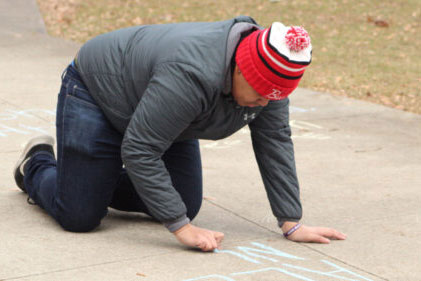With only one day left for student feedback, the Freedom of Speech and Expression Statement is nearing finalization.
The statement, which passed through multiple drafting and review phases before hitting students’ inboxes, lays out the institution’s commitment to protecting and setting necessary boundaries around the freedom of communication within the Goshen College community.The writing process began in the spring of 2020, when President Rebecca Stoltzfus asked LaKendra Hardware, director for diversity, equity and inclusion, and Jodi Beyeler, vice president for communication and people strategy, to draft a statement that would regulate campus norms and provide a groundwork for existing and new policies.
The statement is not a direct response to the hate speech incident that took place on campus around the same time last spring, said Hardware, but incidents like that one make it clear that articulating ground rules for communication on campus is important.
“This is an opportunity for us to look at our campus and say, ‘how can we ensure that all persons feel protected, but also empowered to stand in their freedom to speak and to express themselves,’” Hardware said.
The deadline for student feedback on the statement is this Friday, Sept. 18, and Hardware encourages as many students as possible to participate by responding with comments and questions.
Julia Schiavone Camacho, associate professor of history, offered her perspective on the importance of the first-amendment right of freedom of speech.
“In United States history, freedom of expression has been closely linked to religious freedom, and the value placed on these freedoms have set us apart (as a nation),” she said.
Schiavone Camacho believes dialogue between diverse people is crucial in institutions of higher education, like Goshen College.
“In a healthy society, ideas, intellectual curiosity and debate flourish,” she said.
The Freedom of Speech and Expression Statement encourages students, faculty and staff “to act according to the principle that the best response to ideas that they find offensive is more speech, not censorship.”
But it also clarifies that “Freedom of speech and expression does not protect speech or behavior against individuals or groups that is discriminatory, slanderous, threatening, intimidating, harassing or incites violence.”
Hardware understands that finding a balance between protecting free speech and setting boundaries to avoid harm is of utmost importance.
“There is a time and place when freedom of speech can become problematic,” she said.
Nathan Pauls, a senior communication and art double major, remembers a time he experienced conflicting ideas on the Goshen College campus.
His first year at GC, a disagreement broke out on his floor over politics and values. He remembers that the situation led to “some tension and white-board writing that turned nasty.”
When underlying trends of discrimination and oppression are added to the mix, there is potential for things to get even nastier, Hardware explained.
She used an example to illustrate this idea.
“I can tell you,” she begins, “that I don’t like your shirt. It’s my freedom of speech [to say that]. But let’s say, your shirt was your identity, and I said, ‘I hate your shirt because your shirt is trash. Your shirt has always been trash.’ And let’s say that that argument has been used historically for folks who have your shirt as their identity. So now I’m not just attacking you, I’m attacking you on the history of what has been said and done in the past. I’m articulating it as freedom of speech, but it’s problematic because of the historical connection to the terrorization of others in that way.”
“I think the time and climate we’re living in calls for people to think about [language],” Hardware said, “Whether it’s political, whether it’s around racial or ethnic identity, whether it’s around sex or gender identity.”
Mindfulness around language is what the Freedom of Speech and Expression statement is meant to encourage.
The final version of the statement will be re-presented to the campus community and adopted once student feedback is reviewed and final revisions made.



